
The pipe organ is a musical instrument that produces sound by driving pressurised air through the organ pipes selected from a keyboard. Because each pipe produces a single pitch, the pipes are provided in sets called ranks, each of which has a common timbre and volume throughout the keyboard compass. Most organs have many ranks of pipes of differing pitch, timbre, and volume that the player can employ singly or in combination through the use of controls called stops.

In music, the organ is a keyboard instrument of one or more pipe divisions or other means for producing tones. The organs have usually two or three, up to five manuals, for playing with the hands, and pedalboard, with the feet. With the use of registers, several groups of pipes can be connected to one manual.
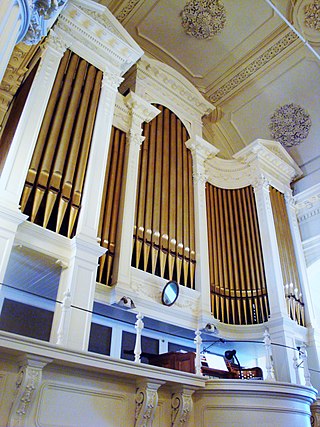
Æolian-Skinner Organ Company, Inc. of Boston, Massachusetts was an American builder of a large number of pipe organs from its inception as the Skinner Organ Company in 1901 until its closure in 1972. Key figures were Ernest M. Skinner (1866–1960), Arthur Hudson Marks (1875–1939), Joseph Silver Whiteford (1921-1978), and G. Donald Harrison (1889–1956). The company was formed from the merger of the Skinner Organ Company and the pipe organ division of the Æolian Company in 1932.
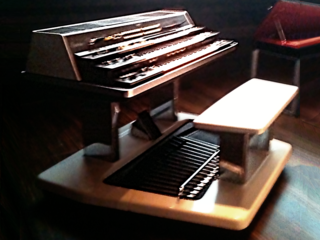
An electric organ, also known as electronic organ, is an electronic keyboard instrument which was derived from the harmonium, pipe organ and theatre organ. Originally designed to imitate their sound, or orchestral sounds, it has since developed into several types of instruments:

A pedalboard is a keyboard played with the feet that is usually used to produce the low-pitched bass line of a piece of music. A pedalboard has long, narrow lever-style keys laid out in the same semitone scalar pattern as a manual keyboard, with longer keys for C, D, E, F, G, A, and B, and shorter, raised keys for C♯, D♯, F♯, G♯ and A♯. Training in pedal technique is part of standard organ pedagogy in church music and art music.

A theatre organ is a type of pipe organ developed to accompany silent films, from the 1900s to the 1920s.
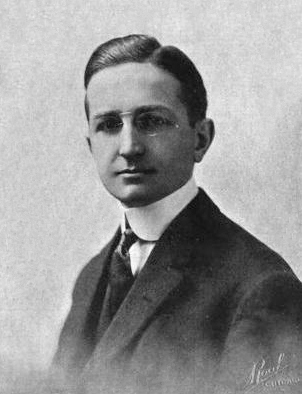
Ernest Martin Skinner was an American pipe organ builder. His electro-pneumatic switching systems advanced the technology of organ building in the first part of the 20th century.

A manual is a musical keyboard designed to be played with the hands, on an instrument such as a pipe organ, harpsichord, clavichord, electronic organ, melodica, or synthesizer. The term "manual" is used with regard to any hand keyboard on these instruments to distinguish it from the pedalboard, which is a keyboard that the organist plays with their feet. It is proper to use "manual" rather than "keyboard", then, when referring to the hand keyboards on any instrument that has a pedalboard.

An expression pedal is an important control found on many musical instruments including organs, electronic keyboards, and pedal steel guitar. The musician uses the pedal to control different aspects of the sound, commonly volume. Separate expression pedals can often be added to a guitar amplifier or effects unit and used to control many different aspects of the tone.
George Donald Harrison was responsible for the design of some of the finest and largest pipe organs in the United States. Born in Huddersfield, England, he first worked as a patent attorney in 1914 but after military service he began to pursue an interest in pipe organ building, working with Henry Willis & Sons of London.
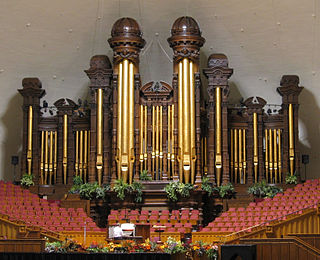
The Salt Lake Tabernacle organ is a pipe organ located in the Salt Lake Tabernacle in Salt Lake City, Utah. Along with the nearby Conference Center organ, it is typically used to accompany the Tabernacle Choir at Temple Square and is also featured in daily noon recitals. It is one of the largest organs in the world. Jack Bethards, president and tonal director of Schoenstein & Co., describes it as an "American classic organ" and "probably one of the most perfect organs ever built."
The Organ Historical Society is a not-for-profit organization primarily composed of pipe organ enthusiasts interested in the instrument's design, construction, conservation and use in musical performance. Formed in 1956, the headquarters moved from Richmond, Virginia, to Villanova, Pennsylvania, in 2017.
Kilgen was a prominent American builder of organs which was in business from the mid-19th to the mid-20th century.
John T. Fesperman was an American conductor, organist and author of several books on organs. From 1965 to 1995 he worked at the Division of Musical Instruments at the National Museum of History and Technology, part of the Smithsonian Institution.

Dirk Andries Flentrop was a Dutch organ builder. He built or restored many major organs in the United States and in Europe. He was noted for his 1977 restoration of two organs from the 17th and 18th centuries in the Mexico City Metropolitan Cathedral.
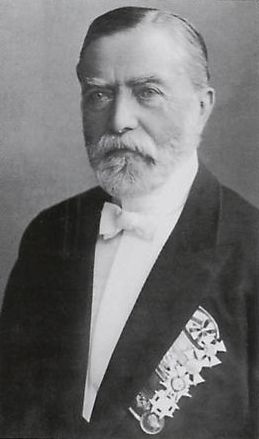
Wilhelm Carl Friedrich Sauer was a German pipe organ builder. One of the famous organ builders of the Romantic period, Sauer and his company W. Sauer Orgelbau built over 1,100 organs during his lifetime, amongst them the organs at Bremen Cathedral, Leipzig's St. Thomas Church, and Berlin Cathedral, which is considered to be "his final great masterpiece".

Matthijs Langhedul was a Flemish organ-builder who did important work in Paris. He and Crespin Carlier had great influence on the development of the classical seventeenth century French organ.
Cleveland Thomas Johnson is an American academic, administrator, music historian, and early-music performer. He retired as President/CEO of the Morris Museum in 2022. Previously, he was Director of the National Music Museum, Executive Director of the Thomas J. Watson Fellowship, Dean of the School of Music at DePauw University, Professor of Music at DePauw University (1985-2012), and Music Librarian at Old Dominion University. DePauw University awarded him the title, Professor Emeritus of Music, in 2012.













